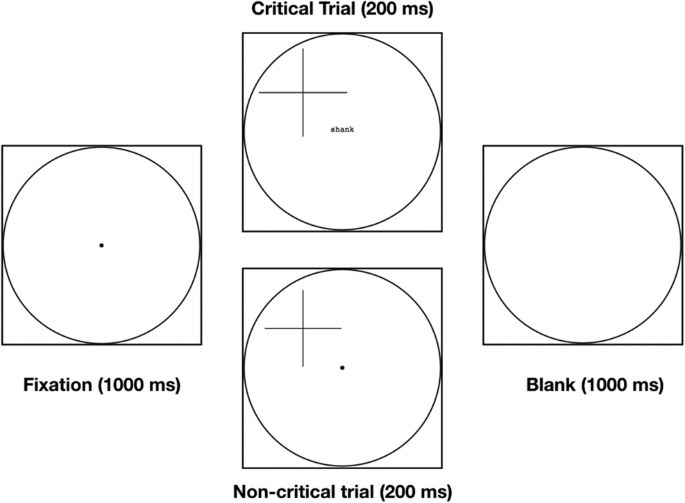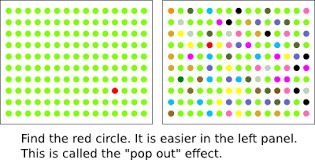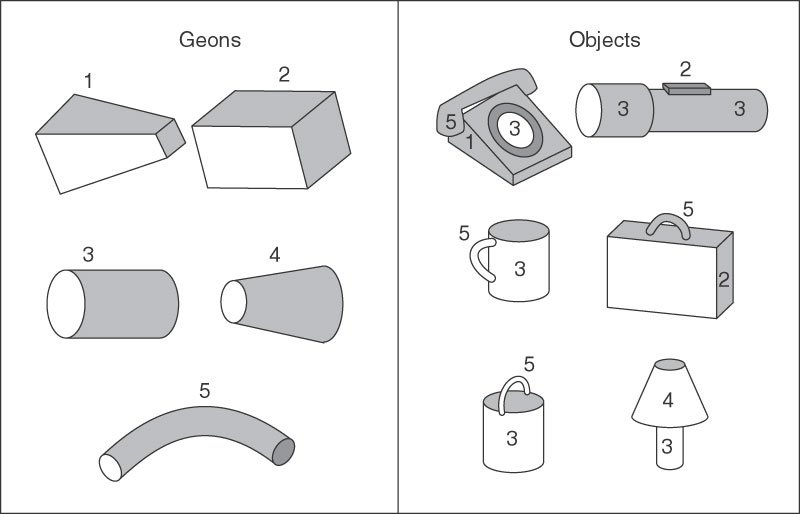a brief account of the intersection between perception and attention
Attention and perception are two fundamental elements for enabling cognitive processes that allow us to be functioning in the environment where we are striving to survive. Likewise any different aspect of functionalities in complex systems, single traits should not seen solely on their own but in conjunction of all other ones that contribute to compounded behaviors.
Attention and perception do not make an exception to this rule.
As in the established definition of agent1, the sensation is the process of acquiring environmental information from the environment through sensors. The behaviour the agent manifests is the result of pondered actions, activated by proper strategies that aim to achieve desirable goals. Living creatures, including humans, do not deviate from this general definition. Attention could be seen as a function that help on elaborating successful strategies in efficient way by partitioning what really can affect the goals, and what it does not 2.
Sensation brings its meaning directly from the raw information acquisition from the senses. They include of course the 5 canonical ones, but not limited of them, they involve also movement, position of the body, pain and temperature. It could be surprising how much sensitive are humans senses. For example, it is possible to detect a candle almost 50km away in a dark and clear night 3. On the other hand, perception is a more abstract concept.
When perception is closely tied up with sensation it is defined as bottom-up perception. In this case, perception is the interpretation of information from the environment so we can identify its meaning 4 and enable more or less accurate predictions about what should be there. Perception, on the other hand, emerges also from cognitive processes that involve memory and attention, completely detached from sensory circuits. This scenario is described as top-down perception, and it is a process strongly mediated by expectations and the contextual setup during which those sensations are collected 5. In the image below, the shadow is expected to lower the brightness of the B region, then a kind of visual compensation innately make us thinking that the region should be brighter without shadow, generating the famous visual illusion.
 |
 |
|---|---|
Attention and perception are highly correlated and it is very evident in every day life. If we are walking in the university department looking for the Cognitive Psychology professor, I think it won’t be surprising if we pay attention on people faces by visual searching in the crowd until the target pops out in the hall. The eye movement will be directed to scan the faces of the people 6. If expectations are violated by novel surprises (e.g.: an old mate in the classroom) these are explored extensively 7. The other face of the coin is inattentional blindness by which what it is not attended during the attention phase is not consciously perceived. For example, 60-80% of the observers do not attend the center point which turns into a text while a distracting cross appears in the left 8 in the figure below.

I’ve mentioned popping out by describing the subjective effect may have when something catches the attention with no efforts. It is established that this is an interesting topic that shows particular dynamic depending on the environmental context. If the search task involves picking a simple feature out of a context disseminated of distracting details, it is much easier than searching for complex pattern with a combination of features - the so called conjunctive search 9. In the experiment below, recognizing a simple red dot among all green ones is automatic, while the case in the right pane involves some degree of attentive scrutiny which is much slower and more resources demanding.

This might suggest that attention is somehow necessary for recognize non-trivial objects 10. The feature integration theory 10 affirms that automatic feature processing is followed by attentive processes to bind the features into a whole object. Objects are not a mere list of independent features and perception does not limit on pattern matching but also on identifying high order structures, with the support of controlled attention.
Just as the letter N is not simply a casual aggregation of 3 segments, things must obey to some grammar for being recognized.
A demonstration of the importance of structural relations is depicted in the image below, where a set of simple forms (geons) can easily compose complex objects 11. That demonstrates that not only the relational information if needed, but it is more critical to perception than the features themselves 12.

While some information need attention to retrieve complex structures from senses, an equal demand of effort is required to selectively ignore conflicting information while performing some tasks. This is the case raised by John Stroop in his famous experiment 13, that demonstrates the difficulty of partitioning contrasting information on one side, and useful one to the other. In the Stroop task, an observer reports the color of appearing words, while the words points to a different color’s name. It appears that the task is more difficult than the no-contrasting information setting (when the name matches the color). Observers activate different parts of the brain on discordant stimuli processing, those parts are in charge of executive control and selective attention functions. For the same reason, when we stop at a cross-light while driving a car, we discriminate the cross-light of our own lane from the adjacent cross-lights. Selective attention prevents us to switch from the brake to the accelerator pedal when it is not the case.
The selective attention theory states that perception is filtered before being processed by high level mechanisms, but it clashes with the notable cocktail party effect (CPE). Unfortunately for Broadbent, the CPE seems to confine the selective theory not as the only way the brain deal with attention. The CPE describes the capability of being caught by unattended stimuli once they present an important pattern. For example, while we’re on talking with friends and someone out of the interlocutor’s circle will loudly mention our name, our attention will be probably triggered by this event toward the speaker and his discourse, even though we were previously unaware of that discussion.
An interesting effect of unattended stimuli is that they interfere with attended perceptions. The experiments that put light on this effect, are the ones that enforce shadowing, by which observers are instructed to follow only one stream of perception among many. If two recorded discourses are played simultaneously, one to the left side, the other to the right side of the observers’ headset:
a: “They were standing near the bank…”
b: “the silicon valley bank has gone bankrupt…” ^[It is not exactly the example of the experiment, since that bank went bankrupt on 2023, but I guess it is equivalent to the purposes of the experiment]
Observers disambiguates the term bank with the financial bank, and not with other possible meanings 14. This experiment tell us that though attention allocates sufficient resources to spotlight some stimuli, it leaves space for unconscious mechanisms that capture information for the unattended channel, for blending it with the attended one.
Giancarlo Frison
-
Russell, Stuart J.; Norvig, Peter; Artificial Intelligence: A Modern Approach (2003, 2nd ed.); Chapter 2. ↩
-
There is no clear definition of what attention is: “No one knows what attention is” (Hommel et al., 2019). The first attempt to categorize it comes from William James in The Principles of Psychology (1890): “is the taking possession by the mind, in clear and vivid form, of one out of what may seem several simultaneously possible objects or trains of thought…It implies withdrawal from some things in order to deal effectively with others”. In the Schema Theory (Neisser, 1976), attention is a dynamic process that seeks information consistent with current situation. I think a good synthesis of many definitions could be summarized into “attention is the allocation of resources and processing to a particular object, region, dimension”. ↩
-
Okawa & Sampath, 2007 ↩
-
William Wozniak. Sensation and Perception ↩
-
Neisser, 1976 ↩
-
Yarbus, 1967 ↩
-
The metaphor of brain as a predictive machine found matches for example on Jeff Hawkins - On Intelligence (2004), and Karl Friston - The free-energy principle: a unified brain theory? (2010). The latter reduces agents as surprising minimizers; the former adapt the free energy principle to human cognition, on which automatic processing will escalate to high form of deliberate decision making (throughout attention mechanisms) whenever the automatic layer does not know what to do in certain circumstances. ↩
-
Mack, Rock 1998 ↩
-
Treisman & Gelade, 1980; Treisman & Sato, 1990 ↩
-
Anne Treisman, Garry Gelade; A feature-integration theory of attention; (1980). ↩ ↩2
-
Biderman, 1987 ↩
-
Biderman, 1985 ↩
-
Stroop, John Ridley -Studies of interference in serial verbal reactions (1935) ↩
-
MacKay, 1973 ↩
Comments